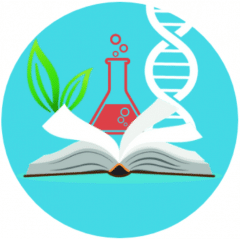Introduction to Chromatography in the Science Classroom
Chromatography is a fundamental technique used in chemistry and biology to separate mixtures into their individual components. In this experiment, we explore how paper chromatography can be used to analyze and isolate the different pigments found in black ink.
The process relies on the movement of a solvent (in this case, water) through a medium (filter paper). As the solvent travels up the paper, it carries along the dissolved components of the mixture. Each substance moves at a different rate based on its molecular characteristics—such as size, solubility, and affinity for the paper. This separation allows for a visual and measurable representation of what the mixture is composed of.
Chromatography is widely used in scientific research for chemical analysis, substance purification, and compound identification. It also plays a role in detecting changes in chemical properties due to biological or chemical reactions. For students and educators, it’s a hands-on way to visualize how mixtures behave at the molecular level.
Hypothesis
Paper chromatography can be used to separate the individual pigments that make up black ink.
Materials
- Filter paper strip
- Test tube
- Rubber stopper
- Straightened paper clip (with hook)
- Black felt-tip marker
- Pencil
- Metric ruler
- Tap water (used as solvent)
- Eraser
- Computer (for data analysis or reporting)
Procedure: How to Perform Paper Chromatography
- Prepare the apparatus: Straighten a paper clip and add a hook at one end. Insert the other end into the center of the rubber stopper.
- Attach the filter paper: Hang a strip of filter paper from the hook. Ensure it hangs freely and doesn’t touch the sides of the test tube.
- Draw baseline: Remove the strip and draw a 5-mm-wide black band approximately 25 mm from the bottom using the black felt-tip pen.
- Mark solvent limit: Draw a pencil line 10 cm above the ink band. This will be the upper limit for the solvent’s movement.
- Add the solvent: Pour 2 mL of water into the test tube. Reinsert the filter paper so the bottom touches the water, but the black band remains above it.
- Observe separation: As the solvent moves up the paper, watch the ink pigments begin to separate.
- Remove and measure: When the solvent reaches the pencil line, remove the strip. Let it dry and measure how far each color moved.
- Record your data: Use a ruler to measure the distance traveled by each pigment and the solvent. Calculate the Rf value (retention factor) for each pigment using the formula:Rf = Distance traveled by pigment / Distance traveled by solvent
Results: Pigment Separation Data
| Color | Distance Traveled (mm) | Solvent Distance (mm) | Rf Value |
|---|---|---|---|
| Yellow | 70 mm | 111 mm | 0.63 |
| Pink | 82 mm | 111 mm | 0.74 |
| Red | 101 mm | 111 mm | 0.91 |
| Purple | 110 mm | 111 mm | 0.99 |
| Blue | 111 mm | 111 mm | 1.00 |
Analysis & Discussion
- How many pigments were separated from the black ink?
Five: yellow, pink, red, purple, and blue. - What solvent was used?
Tap water. - What was the first visible color during the separation?
Orange or yellow appeared first, indicating it traveled the fastest. - In what order did the pigments separate (top to bottom)?
Blue, purple, red, pink, and yellow. - How far did the solvent travel?
111 mm. - What does this tell us about black ink?
Black ink is not a pure substance—it’s a mixture of various colored pigments. - Why did the pigments separate?
Differences in molecular size, solubility, and paper affinity cause each pigment to move at a unique rate. - Why did some pigments travel farther than others?
Less absorbent pigments that are more soluble in the solvent moved farther up the paper.
Error Analysis
Some possible sources of error in this paper chromatography experiment include:
- Measurement inaccuracies: Small errors in reading distances can affect Rf values.
- Solvent volume inconsistencies: Too little or too much solvent may alter the pigment spread.
- Filter paper length: A longer strip might have shown additional colors or more precise separations.
Conclusion
The results supported the hypothesis: paper chromatography successfully separated black ink into multiple pigments. The experiment demonstrated how different molecular characteristics—such as solubility and affinity to the filter paper—affect the movement of each component in a mixture. This hands-on experiment reinforces the idea that seemingly simple substances can contain complex chemical compositions.
Chromatography remains an essential tool in both educational and professional laboratory settings. From forensic science to biochemistry, the ability to separate and analyze chemical mixtures is foundational to understanding the materials around us.




